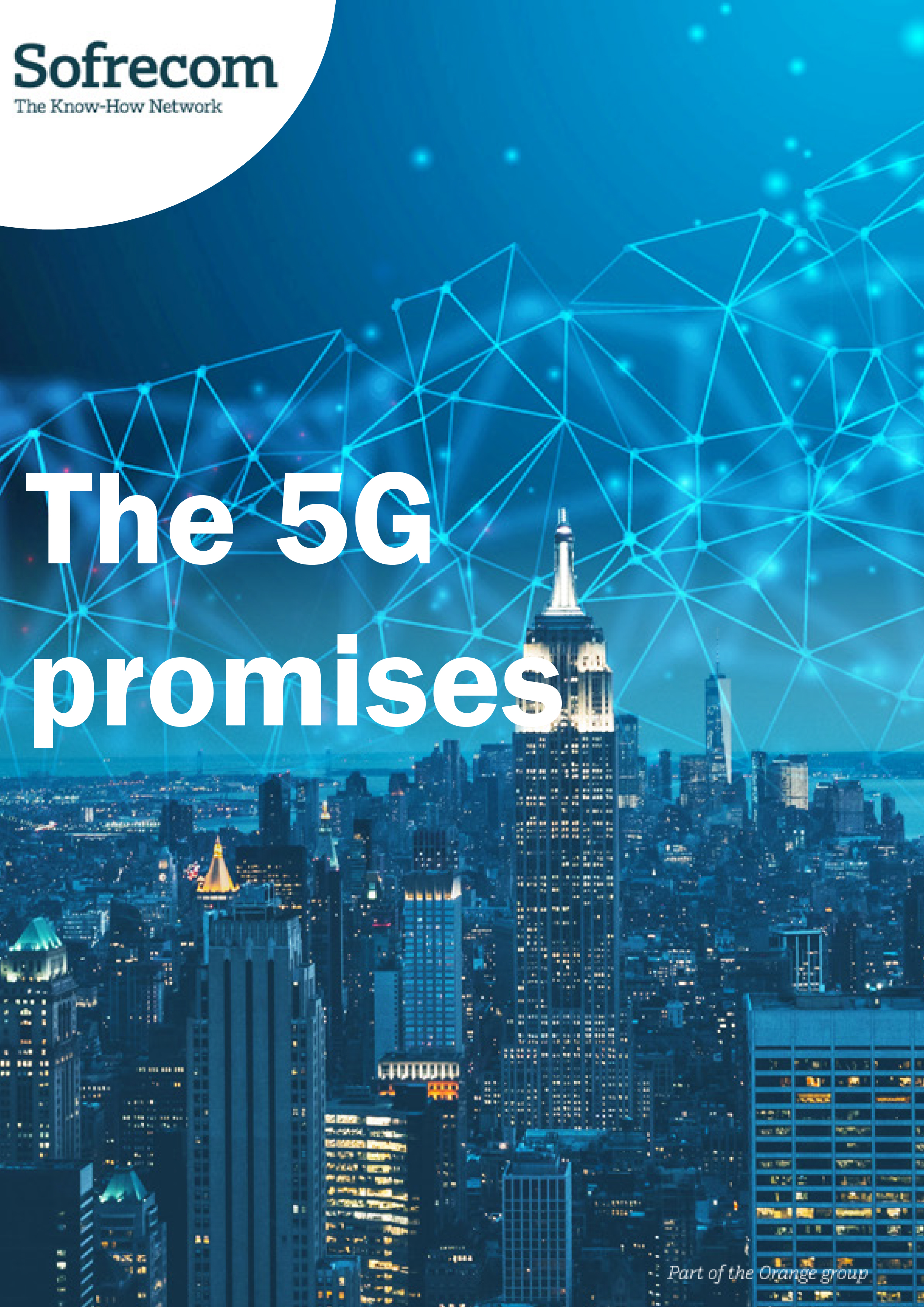
All over the world, operators have now launched their first 5G plans. Trials are being conducted in ever greater numbers. However, operators have been cagey about detailing their strategies for marketing and monetizing their offers. Noting a lack of interest from consumers but considerable impatience from start-ups and established businesses, they have opted for a wait-and-see attitude.
Diversified B2C strategies but no promise of a “wow” effect
Very recently, AT&T sent a strong signal: although the telecom industry’s global leader tirelessly vaunts its efforts to accelerate the rollout of its 5G network, the company’s chief strategy officer hinted that the 5G monetization strategy was still under discussion!
5G marketing strategies still appear quite vague. Where strategies have been more clearly defined, they focus exclusively on the B2C segment, taking a variety of approaches:
- Verizon (USA) intends to monetize only the innovation, selling 5G plans for $10 more than its equivalent 4G deals.
- Sprint T-Mobile (USA) will not be raising its prices. Its marketing discourse promotes additional services, including 4K video streaming and virtual reality. EE (UK) has taken a similar approach, announcing a gamers’ plan with integrated apps designed to significantly enhance the online gaming experience. The telco most heavily committed to new uses is the South Korean, LG U Plus, which has already launched plans featuring virtual and augmented reality as well as gaming.
- Vodafone (UK) aims to stand out by adopting a speed-based positioning. In a departure from its 4G strategy, which monetized mobile data volumes (Gb), Vodafone will offer unlimited 5G at prices that vary based on bandwidth consumption.
It is still too early to seduce users currently satisfied with their 4G use
In reality, 5G technology will increase transfer speeds tenfold, slash latency by a factor of 10 and support unprecedented connection density (1 million connected devices per square km). It will enable reliable ultrafast, responsive connectivity, combined with an extremely comfortable experience for nomadic users.
So why do operators have doubts about the innovation value of 5G? Why are they monetizing it as a sort of “premium 4G”?
There are several explanations:
- 5G is a complex technology that requires a new cycle of heavy investment. It will be rolled out in stages.
- The customer base is limited, as future subscribers must live in a covered area and purchase a 5G smartphone, currently only available at eye-watering prices ($1,000-1,200). It is worth remembering that Apple pushed back the launch of its 4G iPhone by a full year, and may potentially do the same for 5G.
- B2C customers, broadly satisfied with their 4G experience, show little appetite for the handful of new 5G uses being promised for the near future. A study by GSMA* highlights this: 24% of respondents were unaware of the benefits of 5G, and 22% hoped that it would result in cheaper services.
Speed and coverage are two selling points for B2C
The same study yielded some interesting insights into the arguments that might help operators to define the 5G business model.
Speed was cited as the number one expectation for 50% of users, and network coverage was listed as a decisive factor for 40% of users.
Although 5G was not developed to improve the existing network, operators stand to gain from promoting this benefit. 5G will be an attractive alternative to cabled networks in areas unsuitable for fiber, and in countries in which fiber – or even 4G – are late to the market. With transfer rates of 300 Mbit/s – slower than, but comparable to fiber – the new technology will offer telcos an opportunity to attract new mobile customers, even if it does not revolutionize their behavior.
The significant growth drivers will emerge from the B2B segment
The enterprise market is where 5G has the potential to deliver a value-creating revolution for operators, across a vast range of use cases, including remote surgery, Smart-Cities and the IoT, transportation (connected and self-driving vehicles, drones, etc.), safety and industrial automation.
Startups are already promising a new field of possibilities based on cloud computing, AI and the IoT.
Industrials are impatient to access these disruptive services and accelerate their digital transformations. Despite this enthusiasm, telcos have been slow to communicate relating to B2B offers.
There is a reason for this foot-dragging: the 5G network’s advanced features will not be operational until 2021-2023. Operators must validate the performance of this emerging technology before creating their offers, to ensure that the chosen use cases deliver value, and they must build these offers in partnership with the ecosystem, in order to secure a market share.
Although 5G will not necessarily be profitable in B2C, telcos need to be present and visible in this huge market, just to stay in the race. Some will seize the opportunity offered by 5G to make up for time lost rolling out fiber or 4G, and be ready to address the real growth drivers as they emerge from the B2B market.
At this stage, marketing rationales are still being tested and nobody can predict which arguments – in terms of data quantities, speed or services – will convince potential purchasers, who must first be educated regarding the benefits of 5G.
* Source: ‘The Mobile Economy 2019’ – GSMA





